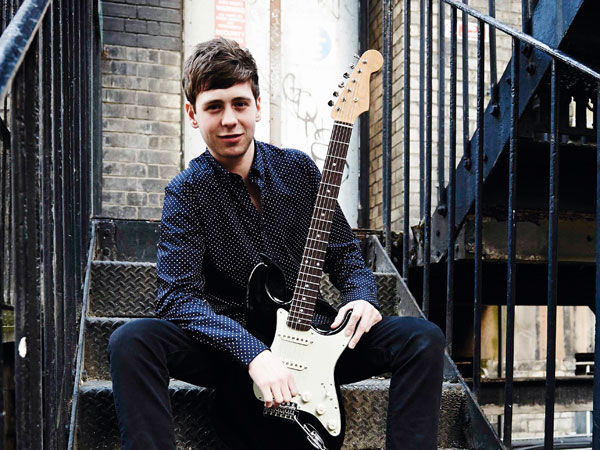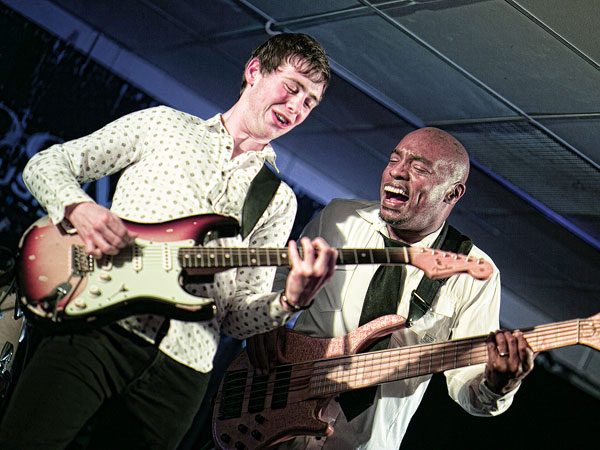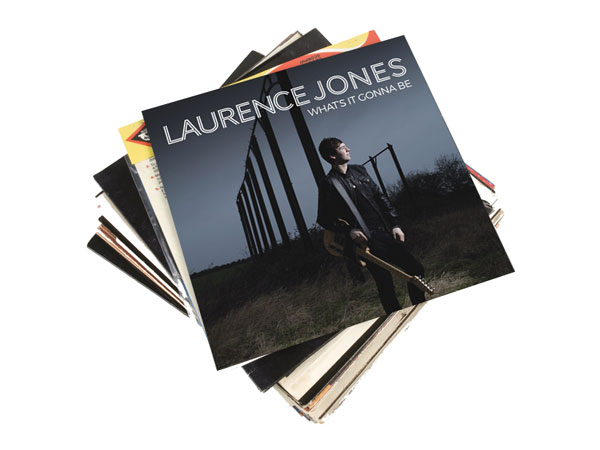
The Sessions
On What's It Gonna Be, 23-year-old British bluesman Laurence Jones comes of age with a self-produced third album that boasts versatility and growing confidence.
The Sessions
"I wanted to get across what we do live - melodies, hooks, melodic guitar parts - but still have that blues feeling. A lot of the songs were written about experiences I’ve had on the road.
"I’m lucky enough to have Luther Allison’s 70s Gibson Les Paul Goldtop, lent to me by the record label"
"I got to tour with the Blues Caravan last year, a package that the label put together. We went to 10 different countries in five weeks. I saw a lot of different things - it was a culture shock, a different world out there, and it really inspired me.
"We all got together as a band in hotel rooms when we got the chance and I’d say, ‘I wrote this song. What do you think?’ and they’d put their parts to it. Roger [Inniss, bass], Miri [Miettinen, drums] and I are a team and they seem to know what I’m going to play, even when I improvise.
"In the studio we were all in the same room and laid down the backing track live, then I’d record solos or the acoustic over that. We are a live band and I like that it came across on the record. It’s a studio album but you can feel the energy."
The Guitars
"I used my Custom Shop ’62 Strat a lot. It’s a 2000 model that I bought from a friend of mine.
"I’d been after that guitar for years. We were at a gig, playing Maryport Blues Festival, and he sold it to me. I went off in the van and two seconds later he said he regretted it. I turned round and said, ‘No way!’ [laughs].
"I’m endorsed by Bare Knuckle and use the Custom ’62 in the bridge. They’re really clean and crisp, even when you’ve got the distortion on.
"A lot of the rhythm guitars were played on a standard American Telecaster. And I’m lucky enough to have Luther Allison’s 70s Gibson Les Paul Goldtop, lent to me by the record label. It’s got so much history in it... I love playing that guitar. I used that on What’s It Gonna Be for the solo."

The Tones
"I’ve never been a fan of distortion from the amp. I’ve tried loads of amps - Marshalls, Mesa/Boogie, Blackstar - and I just can’t get the sound I want through the distortion.
"I like to just have a clean amp, and there’s one pedal I use all the time religiously: the Analog Man King Of Tone. It’s like two Tube Screamers in one pedal and that is my sound.
"Rome wasn’t built in a day so we didn’t listen to any music for three days and then came back to it"
"I was using the Dr Z EZG-50 head and the main amp I used on pretty much all the songs was a PRS Custom 50. That’s a nice bit of kit that belonged to the studio. I didn’t know how it would sound live, but I trusted it to sound good in the studio.
"I like to keep it quite simple. I have two overdrives, an MXR Carbon Copy delay and a wah. I also use the Mad Professor Deep Blue delay.
"The other distortion is a Mojo Hand Rook, which is a really cool pedal. I can hit the left channel on the King Of Tone for a solo or if I want to go a bit more crazy I add all three distortions. It’s like three Tube Screamers at the same time!"
The Mix
"We mixed and mastered it at the same studio, which is something I haven’t done before. And we actually mixed the album twice, which was important because we got to take it home and listen.
"When you’re in the studio for 12-hour days your ears gets used to the sound, so it’s good to take it home and have a listen on the stereo. That was a vital part of the album.
"Rome wasn’t built in a day so we didn’t listen to any music for three days and then came back to it and all we could say about some parts, ‘Oh, wow. That needs to be changed.’"

The Lessons
"There’s only two solos that I wrote out and they’re Set It Free and What’s It Gonna Be. The rest are improvised and that’s what I love, because that’s where the blues is for me.
"I started out on the classical guitar and that’s very structured. The reason I went to the blues is because it was very free and I could play how I felt at the time.
"The label had a lot of trust in me. They said, ‘It’s on your head.’"
"Every solo, we used either the first or second take. Every one after that we kept it underneath but because the energy was so raw from the first or second one we went with that every time."
The Verdict
"It was a great experience to produce my own album on a record label I’ve always wanted to be on, with the band I’ve always wanted.
"The label had a lot of trust in me. They said, ‘It’s on your head.’ But I was really positive of the outcome and I wasn’t going to let anyone down. At the end of the day, it’s what I naturally do the most: creating and playing music is what I do."
What’s It Gonna Be is out now on Ruf Records

Rob is the Reviews Editor for GuitarWorld.com and MusicRadar guitars, so spends most of his waking hours (and beyond) thinking about and trying the latest gear while making sure our reviews team is giving you thorough and honest tests of it. He's worked for guitar mags and sites as a writer and editor for nearly 20 years but still winces at the thought of restringing anything with a Floyd Rose.

